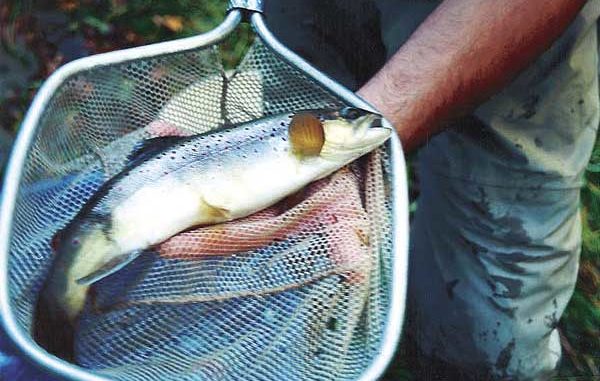
The majority of brook trout streams in the Great Smoky Mountains National Park will remain open to catch-and-keep fishing at least for another year.
If brook trout continue to thrive under harvest conditions, streams could open to catch-and-keep fishing on a permanent basis.
During May 2006, all but three brook trout streams in the park were opened to fishing and harvest on an experimental basis, the first time trout fishers had been allowed to keep brook trout since 1976.
Park Superintendent Dale Ditmanson said a year-long environmental assessment showed harvesting brook trout caused no significant impacts upon numbers or sizes of fish.
“This decision opens the door for a permanent change to park regulations that will allow visitors to fish for brook trout throughout the park, except for three streams where active (brook trout) restoration is currently underway,” he said. “The three streams that will remain off limits to fishing are Bear Creek, Sams Creek and Indian Flats Prong.”
Ditmanson said park biologists will monitor the three closed streams to see if they can be opened to fishing once the streams reach their carrying capacity.
“Monitoring also will be used to assess whether a catch-and-release program should be initiated if at any time the brook trout populations appear to be at risk,” he said.
The only trout-like species native to the southern Appalachians, brook trout once inhabited nearly every watershed in North Carolina 2,000 feet and above. In the late 1800s and early 1900s, heavy-handed logging destroyed more than half of the brook trout’s habitat.
Introduction of non-native rainbow and brown trout caused additional problems for brook trout. The more aggressive rainbow and brown trout hogged limited food resources in nutrient-poor high-gradient mountain streams.
The only places where brook trout could survive were high-elevation streams that had natural barriers such as waterfalls that effectively kept rainbow and brown trout from expanding their territory. As a result, the brook trout’s range had shrunk another 25 percent by the early 1970s.
If the brook trout didn’t have enough problems, anglers were decimating populations by catching and keeping anywhere from 50 to 100 brook trout per day. Brook or “speckled” trout were prized by mountain fishers because they were considered far tastier fare than the imports.
At the time, biologists feared unless drastic measures were taken to protect the brook trout, they’d be extirpated by 2000. In 1976 park officials initiated brook-trout restoration projects in selected streams and made it illegal to keep brook trout anywhere in the park. However, brook trout streams managed by other agencies had no such protection.
While there’s little doubt the extreme measures protected the brook trout, some fisheries biologists believed controlled harvesting had little effect upon brook-trout populations.
Steve Moore, chief fisheries biologist for the park, conducted numerous studies that showed angling mortality was only a small part of the total annual fish mortality. Moore believed environmental problems such as acid rain posed a far greater risk to brook trout populations than anglers.
Several streams in the higher elevations of the park lost entire populations because of high acid levels.
The year-long environmental assessment also showed strong public support for opening brook trout streams to harvest fishing.
Before streams can open to harvest fishing on a permanent basis, Ditmanson said park managers must initiate a regulation change in the Code of Federal Regulations. In the interim, streams will be open on an experimental basis. Changes to existing regulations may take a year or more, park official said.
Anglers unfamiliar with brook trout may be in for a surprise. Only a small percentage of brook trout reach the legal harvest size of 7 inches during their short life span of about 3 years. Most wild brook trout are in the 4- to 5-inch range.
Outside the park, the only protected brook trout streams are in Panthertown Valley. These streams are open only to catch-and release fishing.
Fishing at any stream in the park is limited to artificial flies or lures with a single hook. Size limit is 7 inches, and the creel limit is five fish per day.




Be the first to comment